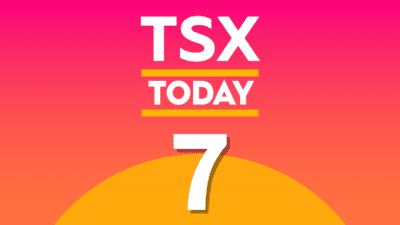Value is not exactly synonymous with the cannabis sector, but if there was a value play in pot, then Quebec’s HEXO (TSX:HEXO) would be it. As of writing, HEXO continues to lag its peers in terms of its valuation, trading at just eight times forward earnings before interest, taxes, depreciation, and amortization (EBITDA) compared to 15 times EBITDA for mid-cap cannabis plays and 40 times EBITDA for the large-cap names.
But before we tackle the reasons why HEXO is trading the way it is, let’s quickly recap some of HEXO’s attractive properties.
Firstly, it’s locked in the best provincial supply agreement out of all the major licensed producers (LPs), with the company slated to supply Quebec’s provincial liquor board with up to 200,000 kilos of cannabis over a span of five years.
Secondly, its years of cultivation experience led beer powerhouse Molson Coors Canada to select the company for a joint venture partnership to brew cannabis-infused beverages.
Thirdly, HEXO’s production ramp-up is going according to schedule with its 1,000,000-sq-feet warehouse on track to be completed by December of this year. And finally, HEXO continues to demonstrate its strong execution capabilities, as channel checks from various cannabis trackers show that HEXO is currently the only LP who will meet their production demand in these early innings of legalization.
So, given all that the company has done right, why is the stock trading the way it is?
I believe the company is trading where it is mainly due to three reasons.
One, the cannabis stocks trade at their current levels based tremendously high expectations of future growth. Unlike, for instance, Canopy Growth (TSX:WEED)(NYSE:CGC), HEXO has a very small international footprint. While the company has announced a recent warehouse and distribution partnership deal with a Greek LP to gain a toehold into Europe, one must keep in mind that HEXO has not pursued optionality on American assets once the legal landscape changes south of the border (unlike Canopy), nor has it established partnership networks in Latin and South America or Australia. On the home front, HEXO’s scale could also be a reason behind its discounted valuation; for example, HEXO can currently produce 25,000 kgs of dried flower, while Canopy has 67,500 kgs in provincial supply agreements alone.
Two, while the joint venture (JV) with Molson speaks volumes about HEXO’s cultivation capabilities, a joint venture is significantly different than a straight cash infusion such as the ground-breaking investment between Canopy and Constellation Brands. Furthermore, the venture will have little to no impact on HEXO’s near-term EBITDA, as HEXO will assume a minority share of the partnership (42.5% versus Molson’s 57.5%), and hence report it under the equity method of accounting. And as the venture will most likely operate at a loss for the initial years, there will not be an income statement contribution for at least the next three years. In other words, while the JV is great news for HEXO, it’s not a game changer in regards to its forward earnings.
Finally, we should address the supply agreement. HEXO, of course, has the largest forward arrangement out of any LP and will most likely hit the expected 35,000 kg deliveries in Quebec by the second year of the contract. However, going westward, I predict HEXO will not be able to enjoy its home field advantage thanks to the extremely popular lineup of products such Aphria’s B.C.-based “Broken Coast” brand and Canopy’s “Tweed.” Moreover, restrictive marketing laws will also make it difficult for HEXO to effectively communicate to the end user the inherent benefits of its premium pricing over competitor offerings.
If I had to make a prediction, I would surmise that HEXO will enjoy less than a quarter of its market share in provinces outside Quebec — or roughly 7,500 kgs. Based on an assumed blended price per gram in two years’ time at $5.50, EBITDA margins of 30%, and assigning it a 15 times 2020 forward EBITDA multiple, I arrive at a fair value HEXO’s shares at roughly $8/share.
In other words, while HEXO is currently trading at a discount to major names in the sector, the discount is largely justified thanks to its size, smaller footprint at home and abroad, and the competition it will face outside Quebec. However, given its world-class execution and home field advantage, the recent sell-off in HEXO presents a buying opportunity — just don’t expect it to double overnight.









